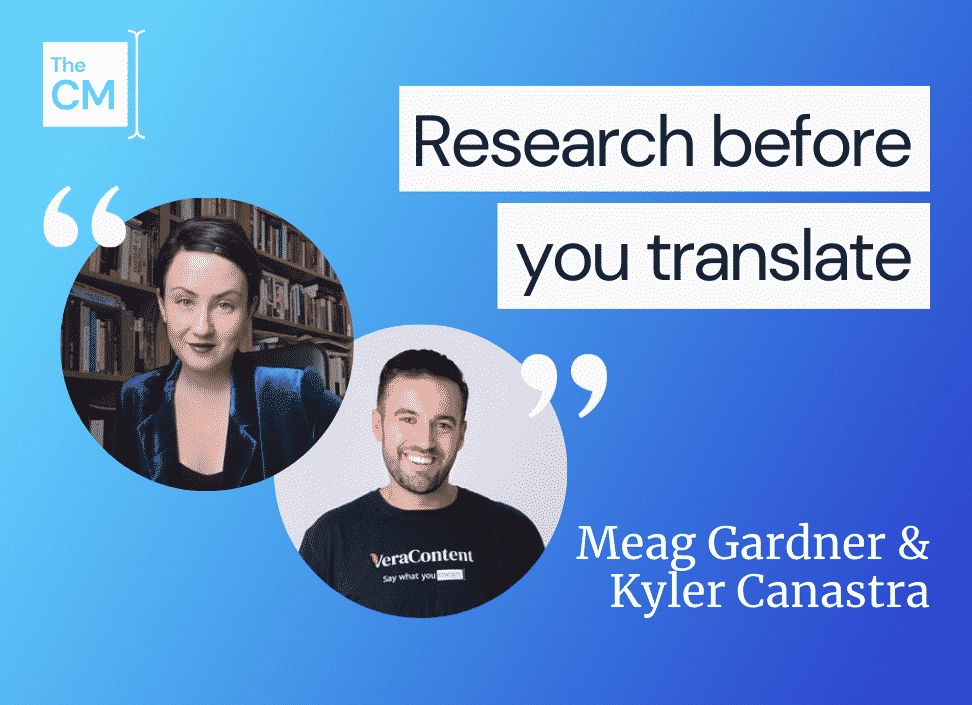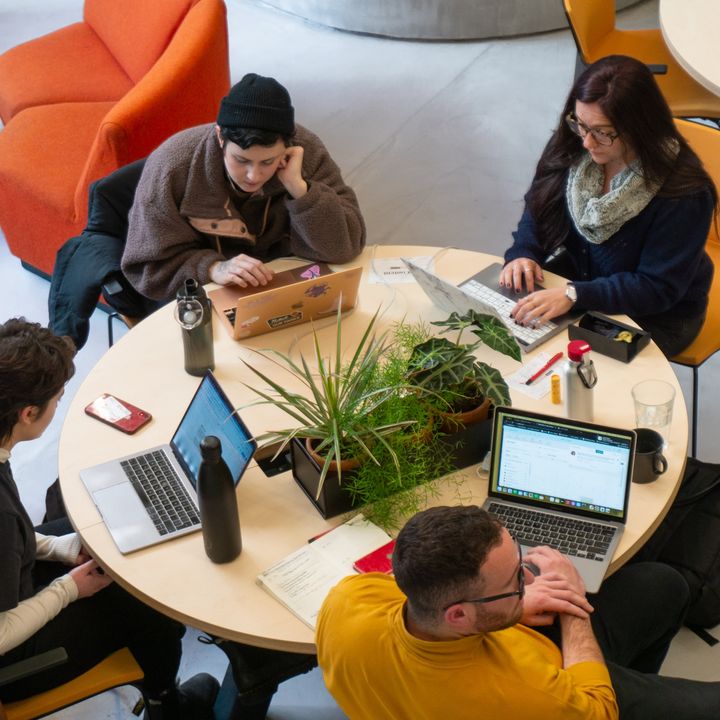
In today’s episode, co-host Kyler Canastra, VeraContent’s head of business development, and Meag Gardner, VeraContent’s senior content editor and community manager, chat about the creative translation process.
As one of our senior Spanish-English creative translators at VeraContent, Meag has vast experience in the fields of content creation, editing and translation—along with a degree in Spanish language and translation studies from Indiana University School of Liberal Arts. Tune in as she talks to Kyler about why global brands today need to dedicate resources to creative translation, how the industry is growing and the most important steps of the creative translation process.
You can listen to the podcast on Apple or Spotify, and read a recap of the conversation below!
Why is it important for global brands to dedicate resources to translation and localization?
We consume translations every day without even realizing it—particularly on social media, where we can engage with content in multiple languages by simply clicking the “translate” option.
But as a brand, machine translations will only get you so far. Users can easily spot when content isn’t written by a native speaker and, if the translation isn’t done well, you can quickly turn your audience away or make them lose trust in your brand.
“You have split seconds to capture your audience on social media. If the translation is off, they’re not going to be interested.” – Kyler Canastra
When you dedicate resources to professional translation and localization services, your audience will see that it isn’t a robot creating the content—it’s a human.
As Meag pointed out:
“Having a human behind your content does good things for your business. It makes people feel more connected with your brand, and that they can trust you.”
On social media, in particular, having a human behind your translated content ensures that you keep up with the current trends and local slang in the region you’re targeting.
See also: Social media localization: Go global without fresh content
What is fueling the expansion of creative translation services?
During the interview, Kyler mentioned that the translation industry is set to see an increase of about 20% between 2019 to 2029. This $45 billion industry is only growing and growing. Why?
According to Meag, it comes down to the increased interconnectedness of the world and the availability of data. Brands can target all customers they think will be interested in their product—no matter where they are in the world.
By serving more ads worldwide, brands get access to data that helps them identify where they are building an audience and which regions they should start localizing.
“For example, if your analytics tell you that 20% of your followers are based in New York now, then you might think to start investing in localized content to actually retain those people who are clicking on your website from those regions.” – Meag Gardner

What are the most essential steps to follow when doing a creative translation?
There’s a lot that goes into the creative translation process that many aren’t aware of. Before even starting the process, Meag highlights the importance of asking questions and researching as much as possible about the project.
“When we’re translating, we have to think about the repercussions of the text, what its purpose is and who it’s for. There’s a lot of power in that.” – Meag Gardner
Find out who the target audience is, why the content needs to be translated, the tone the text should follow and any word or character limits. You also need to ask if the translation needs to prioritize the source text or the target text, for example:
“Does this need to be line by line as similar to the original as possible? Or do we have a bit of liberty to prioritize the final product and make that sound as natural as possible in the target language?”- Meag Gardner
Then, make sure you understand the subject matter and have enough background knowledge and context of the translation.
“Additional things to consider are consistency of punctuation, capitalization, making sure you’re sticking to US English vs. UK English or the other dialects according to the different regions of a language.” – Meag Gardner
See also: What is creative translation? Everything you need to know
How to deal with highly creative translations
The emphasis on creativity is especially important for unique translations like songs, poetry and other highly creative texts.
“The most challenging translations are always poetry or song lyrics—text that maybe doesn’t always make sense. You have to pick apart metaphors, understand what they mean from what they’re saying and then try to replicate a similar image or metaphor in the target language.” – Meag Gardner
During the interview, Meag spoke about a recent translation project that she worked on to translate a Spanish song into English for Sony Music Spain. To get the translation right, Meag did thorough background research on the artist and her full music discography to fully understand her unique writing style and the messages she portrays in her music.
“The more creative a source text is, the more creative you have to be in the target text to be a faithful and good translation.” – Meag Gardner
See the subtitles that Meag worked on above, and read all about the Sony Music Spain project here.
Another important step when translating creative text is for the translator to highlight any unusual or potential issues with the source text. Meag shared a story about a recent translation project that could have had dire consequences had she not flagged a potential issue with the client, who then noticed that the original text had a typo. Listen to the full episode to hear the story—it’s a funny one!
See also: Too funny for words: How to translate humor in multilingual content
How should translators work with translation tools?
As Meag puts it, “this may be a hot take,” but she’s pro using tech tools in translation:
“We should be using these tools to the best of our abilities to be better translators and more efficient and consistent in our work.”
While translation tools are more useful for legal or business-type projects than creative texts, they still provide a solid base to work from.
There are also many aspects of CAT tools that go beyond machine translation. For example, Memsource facilitates project management and offers a translation memory and termbase, which are great for ongoing client projects.
However, a human still needs to be involved throughout the process to ensure that the text reads well and makes sense. Colloquialisms, idioms and local slang aren’t going to come out right with machine translation—and that’s where the human element and creativity in translation comes in.
You can connect with Meag on LinkedIn and also check out Kyler’s speaker profile if you’d like to have him speak at your next event or be a guest on your podcast.
Check out some of Meag’s articles on The Content Mix:
- How important is subtitling on social media?
- The most in-demand types of digital content for 2021
- Storytelling in the age of information: An invaluable resource for global brands
- 5 tips to fight post-vacation blues
To read the full transcript, click on page number 2 below.
